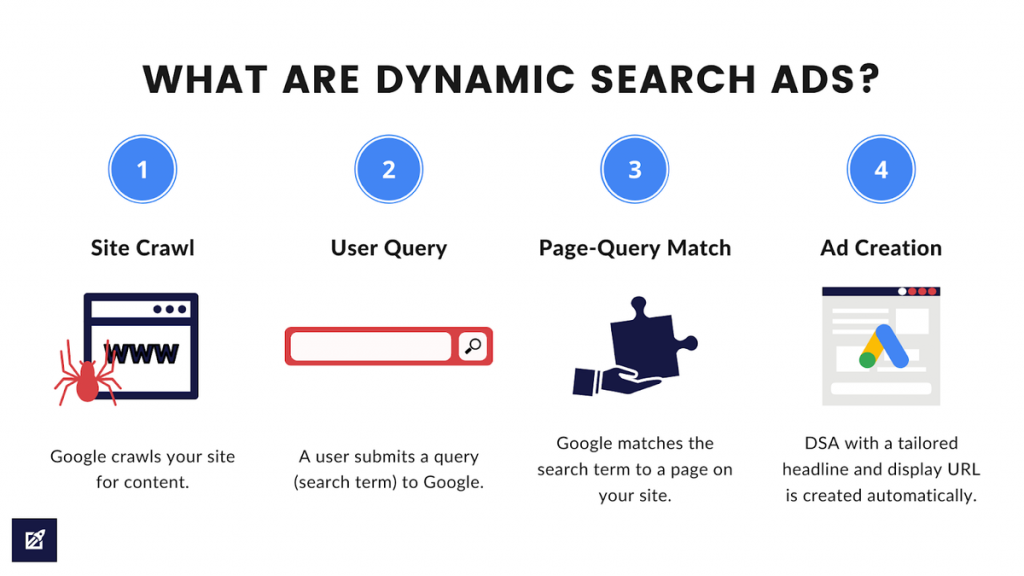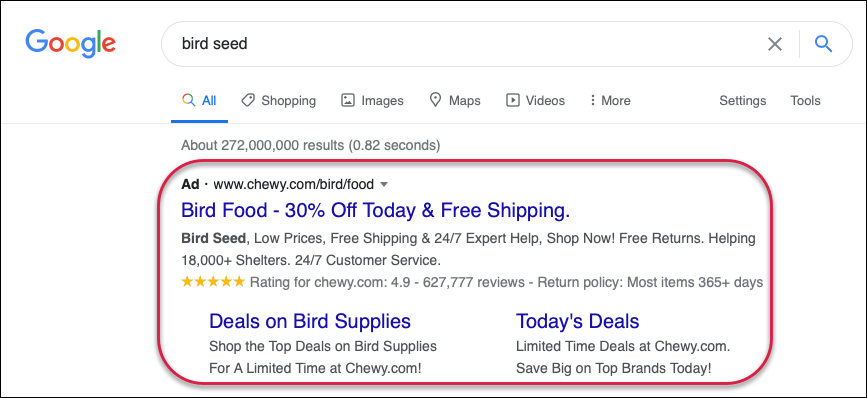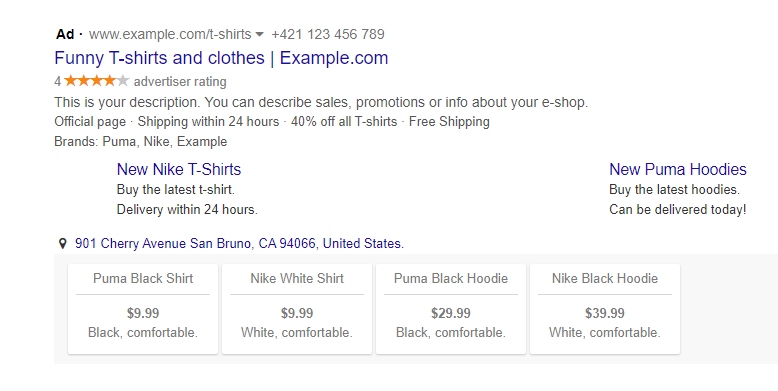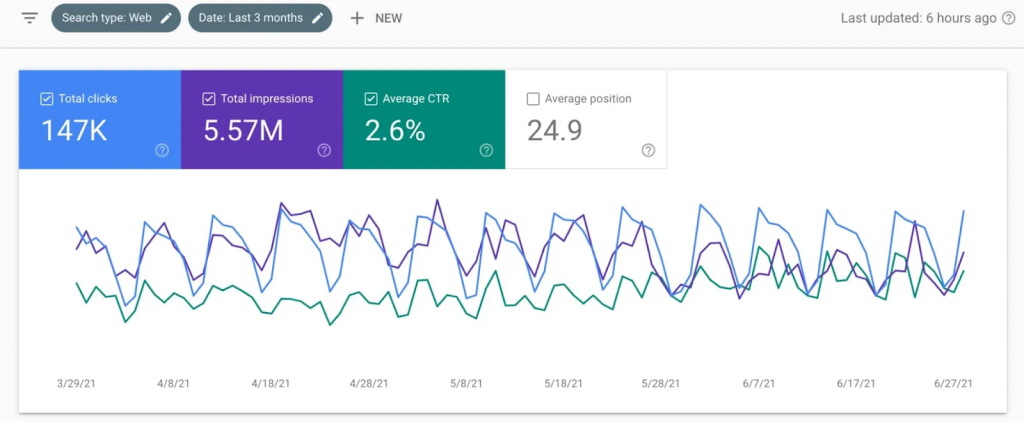In the dynamic landscape of online advertising, staying ahead of the curve is essential for businesses aiming to maximize their reach and impact. Google Ads, a powerhouse in the digital marketing realm, offers a game-changing feature known as Dynamic Search Ads (DSAs). This article delves into the intricacies of Dynamic Search Ads, deciphering how they work, their role in Google Ads Campaigns, and the pivotal aspects advertisers need to master for campaign success.
This article is a segment of a more extensive piece about types of Google Ads.
What are Dynamic Search Ads?

Dynamic Search Ads, abbreviated as DSAs, are an innovative feature within Google Ads that streamline the advertising process by automating the creation of ads based on a website’s content. Unlike traditional search ads that rely on manually selected keywords, DSAs dynamically generate headlines and target users based on the relevance of their search queries to a website’s content. This automated approach allows advertisers to efficiently reach potential customers actively searching for products or services related to their business.
How Dynamic Search Ads Work?

Dynamic Search Ads (DSAs) operate on unique and dynamic mechanics that set them apart from traditional search advertising. Understanding the inner workings of DSAs is crucial for advertisers seeking a more adaptive and efficient approach to reach their target audience. Let’s break down the critical components of how Dynamic Search Ads work:
Dynamic Ad Targets
Dynamic Search Ads rely on Dynamic Ad Targets, which are dynamically generated based on the content of the advertiser’s website. These targets play a pivotal role in matching user search queries with relevant content on the website. Google’s system crawls and indexes the website to identify keywords and phrases, ensuring that the ads generated align closely with the site’s content.
Automated Ad Creation
Unlike traditional search ads that require manual selection of keywords and ad copy, DSAs automate the ad creation process. Dynamic Search Ads dynamically generate headlines based on the website’s content, ensuring the ad copy is relevant to the user’s search query. This automation allows for a more efficient and adaptive approach to advertising.
Relevant Searches Matter
The strength of Dynamic Search Ads lies in their ability to adapt to relevant searches. DSAs continuously analyze user queries and dynamically adjust ad targeting to match the most relevant searches. This adaptability ensures that advertisers reach potential customers actively seeking products or services related to their business.
Search Ad Extensions
To maximize the effectiveness of DSAs, advertisers can leverage search ad extensions. These extensions provide additional information such as contact details, location information, or links to specific pages within the website. Search ad extensions enhance the visibility and relevance of ads, encouraging users to engage further with the content.
Negative Keywords and Exclusions
Advertisers can optimize Dynamic Search Ads by incorporating negative keywords and exclusions. Negative keywords help filter out irrelevant searches, ensuring that ads are displayed to users genuinely interested in the products or services offered. Exclusions allow advertisers to specify areas or content they want to avoid, providing greater control over the ad placement.
In essence, Dynamic Search Ads combine automation, relevance, and adaptability to create a powerful advertising tool within Google Ads Campaigns. As we delve deeper into this article, we’ll explore how to set up Dynamic Search Ads Campaigns, the role of ad groups, and the significance of landing pages in driving successful outcomes. Stay tuned to uncover the full potential of Dynamic Search Ads in transforming your online advertising strategy.
Creating Dynamic Search Ads

The process of crafting Dynamic Search Ads (DSAs) is a strategic endeavor that involves careful orchestration of keywords, ad groups, and landing pages within your Google Ads account. Let’s unravel the steps to create compelling Dynamic Search Ads Campaigns:
- Ad Group and Google Ads Account: Begin by organizing your Google Ads account with well-defined ad groups. Ad groups are pivotal in structuring your campaigns, allowing you to group related keywords and ads. This organization is essential for effective management and optimization.
- Dynamic Search Ads Campaigns: Within your campaign structure, create specific Dynamic Search Ads Campaigns dedicated to leveraging the power of DSAs. These campaigns will serve as the foundation for dynamically generated ads based on the content of your website.
- Search Ad Extensions Matter: Enhance the visibility and relevance of your Dynamic Search Ads by incorporating Search Ad Extensions. These extensions provide additional information, such as contact details, location information, or links to specific pages, making your ads more comprehensive and engaging for users.
- Landing Pages and Ad Relevance: Ensure your landing pages align seamlessly with the dynamically generated ad content. The relevance of landing pages is crucial for maintaining a cohesive user experience and improving the likelihood of conversions.
- Negative Keywords and Exclusions: Refine your Dynamic Search Ads by carefully selecting negative keywords and exclusions. Negative keywords help filter out irrelevant searches, while exclusions allow you to specify areas or content to avoid, ensuring your ads are displayed in the most relevant contexts.
- Automated Ad Extensions: Leverage the power of Automated Ad Extensions to provide additional information dynamically. These extensions save time by automatically generating relevant details such as site link extensions, callout extensions, or structured snippets based on user intent and search queries.
- Lead Form Extensions and Ads Relevant: Consider integrating Lead Form Extensions into your Dynamic Search Ads to capture valuable leads. These extensions streamline the lead generation process by allowing users to submit their information directly through the ad, making it convenient for potential customers to engage with your business.
- Optimizing for New Customers: Tailor your Dynamic Search Ads to attract new customers by optimizing campaign settings. Target specific audiences, locations, or demographics to maximize the impact of your ads on potential customers who may need to become more familiar with your brand.
- Tailored Ads for Different Campaigns: Customize your Dynamic Search Ads for various campaigns. Whether launching a new campaign or targeting specific categories, tailor your ad content to match the objectives and audience of each campaign, ensuring a personalized and practical approach.
- Mobile Optimization: Recognize the prevalence of mobile devices in online searches. Optimize your Dynamic Search Ads for mobile users, ensuring a seamless and responsive experience that captures users’ attention across different devices.
Creating Dynamic Search Ads is a dynamic process that requires constant monitoring and adjustments. By keeping a close eye on performance metrics, ad relevance, and user engagement, advertisers can refine their approach and unlock the full potential of Dynamic Search Ads to drive more clicks, traffic, and qualified leads.
Advanced Strategies for Dynamic Search Ads

As we delve deeper into harnessing the potential of Google Dynamic Search Ads (DSAs), it’s essential to explore advanced strategies that can elevate the effectiveness of your Search Campaigns. Let’s navigate through key considerations and optimizations to refine your DSA Campaigns and maximize their impact.
Search Campaigns and Target Keywords
Tailor your Search Campaigns to specific target keywords, ensuring that your Dynamic Search Ads align precisely with user search queries. Regularly review and update your list of target keywords based on evolving trends and the ever-changing landscape of user behavior.

Landing Page Optimization
Elevate your landing pages to complement the dynamism of DSAs. Optimize landing page content to resonate with the dynamically generated ad copy, providing a seamless transition for users from the ad to a landing page. A cohesive user experience enhances the likelihood of conversions.

Search Ad Extensions in Action
Explore the full potential of Search Ad Extensions to add depth and relevance to your ads. Utilize site link extensions, callout extensions, and structured snippets to convey valuable information directly within your ad, making it more compelling and informative.

Utilizing Automated Extensions
Leverage the power of Automated Extensions to streamline the ad creation process. These extensions automatically generate additional details based on user intent and search queries, saving time and providing users with more comprehensive information.

Price Extensions for Visibility
Increase the visibility of your products or services by incorporating Price Extensions. Displaying prices directly within your ads helps users make informed decisions before clicking, leading to more qualified traffic and potential conversions.

Location Extensions for Local Impact
For businesses with physical locations, integrate Location Extensions into your DSAs. This feature enhances local visibility by displaying your business address, encouraging users to visit in person, and boosting engagement from local audiences.

Structured Snippets
Implement Structured Snippets to highlight specific aspects of your products or services. Whether it’s product categories, service offerings, or unique selling points, Structured Snippets provide users with a quick overview, increasing the relevance and appeal of your ads.

Targeting Options and Flexibility
Explore the diverse targeting options available for DSAs. Whether targeting specific demographics, interests, or devices, customize your approach to match your audience’s preferences. This flexibility ensures that your ads reach the most relevant users.
Direct People with Call-to-Action
Craft compelling headlines and descriptions that include clear calls to action. Directing people with a specific goal increases the likelihood of engagement and conversions, aligning with the guidance of your campaign’s overarching goals.

Analyzing Performance Metrics
Regularly analyze the performance metrics of your Dynamic Search Ads. Monitor key indicators such as click-through rates, conversion rates, and ad relevance. Use these insights to fine-tune your strategy and optimize your campaigns for better results.

By delving into these advanced strategies, advertisers can harness the full potential of Google Dynamic Search Ads, achieving increased visibility, more qualified leads, and enhanced conversion rates.
Exploring the Types of Dynamic Search Ads

Dynamic Search Ads (DSAs) come in different types, each designed to cater to specific advertising goals and strategies. Understanding these types allows advertisers to leverage the full potential of a DSA campaign. Dynamic search ads (DSA) come in a variety of types, each designed to meet specific advertising goals and strategies. Understanding these types allows advertisers to realize the full potential of DSA campaigns. It’s also worth taking a look at other types of search ads, including Google Performance Max ads, Display ads, Shopping ads, Discovery ads, Video ads. But, Dynamic Search Ads have different types, including:
- Standard Dynamic Search Ads: Standard DSAs are the foundation of dynamic advertising. These ads automatically generate headlines based on the content of the advertiser’s website. Advertisers provide a description line and a display URL, while Google dynamically inserts the final URL. Standard DSAs are versatile and well-suited for campaigns that cover a broad range of products or services.
- Dynamic Search Ads with Page Feeds: Page feeds enhance the precision of DSAs by allowing advertisers to specify a list of URLs and associated custom labels. This approach provides more granular control over the products or services promoted in each ad. Page feeds benefit advertisers with extensive product catalogs, enabling them to focus on specific categories or subsets of their offerings.
- Dynamic Search Ads with Custom Labels: Custom labels add a layer of organization to DSAs by allowing advertisers to tag specific pages with custom labels. This enables a more strategic approach to ad creation, as advertisers can target specific product attributes or groupings. Custom labels are particularly valuable for e-commerce advertisers highlighting products with specific characteristics.
- Dynamic Search Ads with Targets: Dynamic Search Ads with targets allow advertisers to set specific rules and conditions for ad creation. Advertisers can define targets based on URL conditions, page content, or custom labels. This level of customization ensures that ads are generated for specific criteria, offering greater control over the relevance of the generated ad content.
- Dynamic Search Ads for Categories: Advertisers can opt for DSAs designed to promote products or services within designated categories. This type of DSA allows advertisers to focus on highlighting offerings within particular segments of their website, catering to their target audience’s diverse interests and preferences.
- Dynamic Search Ads for Landing Pages: Targeting specific landing pages is another strategic approach within DSAs. Advertisers can choose to promote products or services associated with particular landing pages, aligning their ad content with the user’s journey through the website. This type of DSA is effective for campaigns with a strong emphasis on user experience and conversion optimization.
- Dynamic Search Ads for New Campaigns: DSAs designed for new campaigns are tailored to assist advertisers in launching fresh initiatives. Whether promoting a new product line, service, or a campaign with specific goals, this type of DSA streamlines the process of creating relevant and engaging ads for new additions to the website.
- Dynamic Search Ads with Seasonal Focus: DSAs are designed to capitalize on the changing seasons, holidays, or specific events. Advertisers can create dynamic campaigns that automatically adjust ad content based on the seasonal relevance of products or services. This approach ensures that ads remain timely and aligned with current market trends.
Each type of Dynamic Search Ad offers unique advantages, allowing advertisers to tailor their approach based on their specific objectives and the nature of their products or services. The flexibility inherent in DSAs empowers advertisers to adapt their strategies dynamically, ensuring that their campaigns remain relevant and effective in an ever-changing digital landscape.
Conclusion
In the dynamic landscape of online advertising, Dynamic Search Ads (DSAs) have solidified their role as an indispensable tool for advertisers seeking adaptability and efficiency in reaching their target audience. This article has delved into the multifaceted world of DSAs, offering a comprehensive understanding of ad types, strategic considerations, and advanced optimization techniques. Whether dynamically generating ads across the entire site or leveraging specific URLs, advertisers have various tools, including features like page feeds and custom labels, to tailor DSAs to their unique campaign goals.

A PPC specialist who started with organic social media. For several years, the core of his activities are:- Google Ads, Microsoft Ads, Meta Ads, TikTok Ads, Twitter Ads, Linkedin Ads. He has led campaigns with a global reach, e.g. for FootballTeam, G2A, ETOTO, as well as many smaller campaigns in the sports, construction and financial industries. Has full focus on ROAS. Privately, a fan of football, history of wars and Star Wars.

